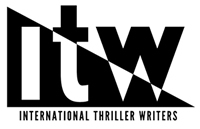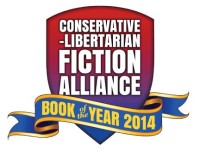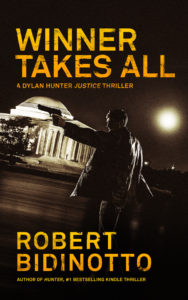Some time ago, I published a piece telling aspiring authors “Ten Reasons You Should Skip Traditional Publishers and Self-Publish Ebooks Instead.” Yet despite the clear advantages of “indie” over “traditional” publishing, the prospect of “DIY” publishing still scares the hell out of many writers. Their most common worry?
“But…how would I market my book on my own?”
That fear is the main reason why so many hold out forever for a traditional contract, then accept lousy ones. They want a publisher to take the burden of marketing off their backs.
Well, let me share a dirty little secret that publishers don’t want newbie authors to know. Despite all their advance promises to give you lots of promotional support, they mostly will leave the marketing of your book up to you.
That’s right: They save their promotional budgets for King, Evanovich, and Grisham—not for struggling beginners or “mid-listers.” So, if you’ll have to promote your book all by yourself anyway, then why surrender most of your royalties and rights to a publisher?
Still, the question remains: How do you market a self-published book?
I spent a long time studying the promotional methods of successful self-published authors before I released my debut thriller, HUNTER. And, as I have described here, their tips helped HUNTER to become a big bestseller in December 2011.
I learned that becoming a successful “indie” author requires two basic things. First, you must craft a book that appeals to an identified target audience. Second, you must make your book “discoverable” to that target audience.
Let me explain what that means, in ten steps:
1. Write the best book you can—then, write your next one.
Crafting an appealing book is 90% of the marketing battle. No amount of marketing ingenuity will help an unappealing book succeed. On the other hand, I’ve seen great books succeed with little or no marketing push. (Hugh Howey’s Wool is an outstanding example.)
Bottom line: Good “word-of-mouth” is the best advertising.
In addition to writing a good book, the next best marketing tactic is to write more good books. Each new title will broaden your name recognition and generate more sales for all your previous ones. That’s because many readers are “binge readers.” They find an author they like, and they then seek out and scoop up every single title that the author has written previously.
Even better, write a series. Books linked together by some connecting theme (think of John Gray’s “Mars and Venus” books), or by some appealing character (think: Harry Potter, Jack Reacher, Stephanie Plum, Tarzan, Sherlock Holmes, Mitch Rapp, Mike Hammer, Scot Harvath, Sean Dillon, Spenser, Elvis Cole, Joe Pike, etc., etc.), will foster a virtual addiction in your fans, who will then eagerly await the publication date for every new installment in the series. Better yet, each new book released will attract new fans, prompting them to go back and buy all the prior books in the series. That’s how bestselling authors expand their audience over time, often geometrically.
Every successful author I know agrees: The single best “marketing tactic” that you can employ, by far, is to write and publish your next book. In fact, many of them counsel that you shouldn’t even bother to begin doing any promotions until you’ve written and published at least three books. Success in indie publishing is a marathon, not a sprint.
Still, stories of books—especially self-published books—succeeding without any marketing, are rare. Most books, even good ones, will languish, invisible among millions of available titles, unless you do something to make them stand out and become visible—discoverable—to some target audience.
So, let’s assume that you have written a good book. Now, your pre-publication job is to enhance its “discoverability.” Here’s some key stuff to take care of before you publish:
2. Identify your target reader, find out where he is, and think like that reader in every aspect of your marketing.
[Note: I would now amend what I wrote in this section with the ideas in this post.]
No book appeals to everyone. So, don’t even try to market broadly and generically; that’s a waste of your time and money. Instead…
 1. Narrowly define your target reader audience. Do they share a demographic profile (age, sex, ethnicity, background, etc.)? What are their values and interests? Who are their heroes? Write a profile of your “ideal reader.”
1. Narrowly define your target reader audience. Do they share a demographic profile (age, sex, ethnicity, background, etc.)? What are their values and interests? Who are their heroes? Write a profile of your “ideal reader.”
2. Next, find out where they hang out. What books and magazines do they read? What movies do they like? What online sites do they frequent? What groups to they belong to? Compile lists of these things; you’ll want to target them later.
3. Now, think like that reader in all aspects of your marketing. No, this doesn’t mean pandering to readers as a writer. But in every marketing decision and action, ask yourself: How would this be perceived by my target reader? Never view marketing decisions as aspects of your artistic self-expression. Marketing is simply the effective communication of values. It means connecting your work with the values and interests of your targeted customer.
3. Don’t be amateurish. Be totally professional in all aspects of your writing, editing, and production values.
Face it: Your book is competing with millions of other titles—many by Big Name authors from major publishers—for the attention, consideration, and purchasing dollars of your target reader. That’s why you must give that reader every impression of being as professional as your competitors—and never amateurish or “self-published.” So…
- Aim for craftsmanship in your writing. Always strive to learn and improve.
- Be patient: Take your time to do things right rather than rush to publish.
- Test your final manuscript on “beta readers”: people with writing and editing skills, but especiallymembers of your audience of target readers.
- After their input, carefully edit, proofread, format, lay out, and design your book—and preferably, have those tasks done by hired, objective pros. What you may think are “little things”—typos, misspellings, bad punctuation—will be tell-tale signs of “amateur” to many browsing customers, and you’ll lose them. Those “little things” count in a big way, if you wish to establish a professional image and reputation. (Here’s one place where you can find the good contract help you’ll need.)
- Make sure your cover looks professional—like a major publisher’s. First, it must suggest the right genre to your target reader. Second, it must consist of simple, bold images, and use big, colorful, contemporary fonts for the
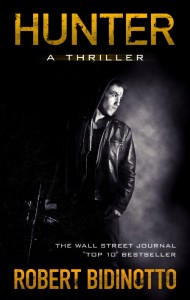 title and author name. All of this should be visible and legible when reduced to thumbnail size, which is how customers will probably first see it online. And third, test potential cover designs on some members of your target audience before you decide which to use. Remember: A cover is not about what you like; it’s about what your target reader likes. Don’t just grab some images off the Internet, use PhotoShop on them, then select Times Roman fonts for the title and your name. That all-too-common approach simply screams “self-published amateur,” and it will turn off many prospective readers. If you’re not a graphic designer, spend a couple of hundred bucks and hire one. (You can find good ones at the preceding link.) It will be one of the best investments you’ll ever make.
title and author name. All of this should be visible and legible when reduced to thumbnail size, which is how customers will probably first see it online. And third, test potential cover designs on some members of your target audience before you decide which to use. Remember: A cover is not about what you like; it’s about what your target reader likes. Don’t just grab some images off the Internet, use PhotoShop on them, then select Times Roman fonts for the title and your name. That all-too-common approach simply screams “self-published amateur,” and it will turn off many prospective readers. If you’re not a graphic designer, spend a couple of hundred bucks and hire one. (You can find good ones at the preceding link.) It will be one of the best investments you’ll ever make.
Before I published HUNTER, I knew a “noir” look would capture the mood for my vigilante crime thriller. But I needed a cover that would really “pop” and grab the eyes of my target audience from amid the sea of other book covers displayed on sites such as Amazon. My talented young cover designer, Allen Chiu, understood exactly what I was looking for and simply knocked it out of the park.
Here is another fundamental consideration for your marketing tactics:
4. Carve out a distinctive market niche, and “brand” yourself and your work.
Years ago, I encountered the invaluable little marketing classic by Al Ries and Jack Trout titled Positioning: The Battle for Your Mind. Its subtitle is “How to Be Seen and Heard in the Overcrowded Marketplace.”
Well, that’s what successful indie authors now call “discoverability.” And here are a couple of key points about how to enhance it:
 First, “brand” yourself and your book. Carve out a narrow, distinctive “niche” in the book marketplace based on some catchy concept, theme, or image that will appeal to your target readers, but simultaneously distinguish your work from all others in your genre.
First, “brand” yourself and your book. Carve out a narrow, distinctive “niche” in the book marketplace based on some catchy concept, theme, or image that will appeal to your target readers, but simultaneously distinguish your work from all others in your genre.
Since my novel is about a mysterious vigilante hero, I decided that my brand would be “The Vigilante Author.” I use the vigilante concept to distinguish my book from other types of thrillers. But my hero is also distinctive from other fictional vigilante characters, because he’s unusually self-reflective and philosophical about what he’s doing. In fact, you might describe him as a kind of “philosophical Zorro.” So that even more tightly defines my market “niche,” setting my work apart.
Bottom line: Find some catchy, distinctive concept that works for you.
Second, use your “brand” in everything you do to promote your work: book covers, author photos, blog designs, promotional copy, business cards, etc. That kind of focus and integration will guarantee that your “brand” will become uniquely identified with you, making you and your work memorable for your target readers.
You can see by this blog how I employed my “Vigilante Author” brand as its title, then tied the blog’s visual theme to my book cover. I even selected an author photo that would reinforce my brand. (And yeah, I wear that “Indiana Jones” hat in public a lot. Besides good branding, I think it just looks cool. And I’m old enough not to care if anyone thinks otherwise.)
5. Don’t price your book either too low or too high. Price it strategically to be competitive.
Some indie authors have achieved a lot of success by running temporary sales on their ebooks—even setting the price at “free” for a few days. This tactic can generate a lot of visibility and build your fan base quickly. Applied to one book in an ongoing series, low or free pricing also can attract many readers who’ll then go and buy all the others.
But obviously, it’s not a great tactic to give away your work permanently, not if your long-term goal is to make writing books a paying proposition.
So again: “Think like your target reader.” If you price your ebook too low—say, 99 cents—he may think: “Cheap—probably self-published—probably lousy quality.” On the other hand, if you price it too high, you’ll lose a lot of sales because you aren’t a household name like King or Clancy or Evanovich.
You also should know that ebook pricing affects royalties. On Amazon, for example, you get 35% royalties on ebooks priced from 99 cents up to $2.98, 70% on ebooks priced between $2.99 and $9.99, and then back down to 35% on books priced at $10 or higher. Clearly, you make the most money per sale by pricing between $2.99 and $9.99.
Personally, I think the pricing “sweet spot” for ebooks by a newbie, self-published author lies between $2.99 – $4.99 for a full-length ebook, around $1.99 for an e-published novella, and 99 cents to $1.99 for an e-edition of a short story. (FYI: I priced HUNTER at $3.99 from the outset and I’ve never regretted that decision.)
After you’ve earned a Big Name, you can and probably should raise your prices. But I wouldn’t try doing that until I had an established following and multiple titles.
For print editions, I think you should try to price your book just a bit lower than comparable hardcovers or paperbacks issued by major publishers—again, until you acquire a good fan base.
Now, I want to mention one of the most important, yet neglected things that an author can do to generate sales:
6. Don’t be dull! Carefully craft compelling promotional copy on your Amazon, Barnes & Noble, and other online product pages.
This is one of the biggest failings of most self-published authors. They knock themselves out parsing every sentence inside their book—yet they treat what they say about their book, in its product descriptions and marketing materials, as an afterthought. Many of their book blurbs are about as exciting as cooking recipes. And then they wonder why their books don’t sell.
You must craft compelling product descriptions, with endorsement blurbs (if you have them), for your product pages on Amazon and elsewhere. Because most prospective buyers eventually will wind up on online product sales pages, your product description will be your book’s final sales pitch. Its only purpose is to “close the sale.” So, make sure it is as colorful and persuasive as possible.
Study the dust-jacket copy of books issued by major publishers in your genre, just to get a feel for the style, cadence, and layout of riveting promotional copy. That is what you’re looking to emulate.
Then test some drafts of your blurbs on members of your target audience and see what language grabs them. If your description arouses just enough interest and intrigue to prompt a purchase, that’s good enough.
And remember: Promotional copy is supposed to be only a teaser—not an exhaustive presentation of the story. Its job is to build curiosity, not to satisfy it. You build intense curiosity not by revealing everything, but by what you don’t reveal.
Ask any successful stripper.
Then, there are tactics you can employ specifically on Amazon to attract readers:
7. Make it easy for your target readers to find your book by categorizing it strategically on Amazon.
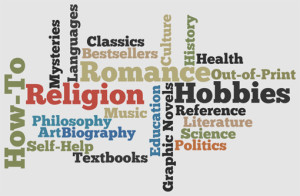 Amazon is the 800-pound gorilla of online book marketing. To help readers find the books they like, Amazon provides a host of book categories and subcategories, distinguished by genres and subgenres, each with its own bestseller list.
Amazon is the 800-pound gorilla of online book marketing. To help readers find the books they like, Amazon provides a host of book categories and subcategories, distinguished by genres and subgenres, each with its own bestseller list.
This will help your target reader find your title—but only if you’ve categorized it in the places where he most likely will be searching for your kind of book. In addition, if you can get your book to show up prominently on some Amazon subcategory bestseller list, it will further boost its visibility to readers.
So, how do you do this? When you first publish your book, Amazon allows you to list it in two separate categories or subcategories. But to make it easier to discover, don’t just list it in the broadest, most generic categories, like “Romance” or “Mysteries” or “Thrillers.” Dig down into the less-populated subcategories with fewer titles (e.g., “Romantic Suspense,” “Technothrillers,” “British Mysteries”), where your book will stand out better.
You want to choose subcategories that, first of all, are most likely to be searched by your target reader. But then, to make it easier for your book to get onto some subcategory bestseller lists, pick appropriate subgenres with the fewest competing titles. You can find out exactly how many books are listed in each genre category and subcategory by searching the category “tree” on the left side of many Amazon book listing pages. And if you have trouble listing your book in the subcategories you want, just email Amazon. Their staff will be more than willing to help you.
There are also some things that you should (and shouldn’t) do in order to build a loyal readership.
8. Don’t become a “book-spammer.” Instead, establish personal, helpful, mutually rewarding relationships with your readers.
Many successful self-publishing authors are convinced that paid ads are usually a waste of money. I agree. (Though there are exceptions; see below.)
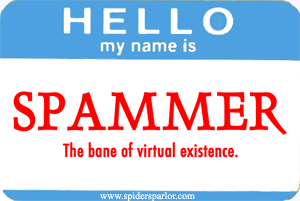 I also think that many self-publishing authors are inept when it comes to using social media. They send out constant email blasts and Tweets about their books, becoming pests. That’s because they approach social relationships as “takers” rather than “traders.”
I also think that many self-publishing authors are inept when it comes to using social media. They send out constant email blasts and Tweets about their books, becoming pests. That’s because they approach social relationships as “takers” rather than “traders.”
A trader knows that if you want to get something from someone, you have to give back something in return.
The most cost-effective promotion and marketing strategy is to befriend your readers via online social networking. Don’t run yourself ragged doing this. I recommend that you pick a single online networking or discussion site, either Facebook, Google +, Goodreads, or Twitter. Become a valuable contributor there. Also, you might occasionally join in on blogs and discussion forums in your book’s genre or topical area(s) of interest. That’s where your target readers are likely to be. Hang out in those places mainly to make friends and learn, and you’ll occasionally find natural, unobtrusive ways to mention your book(s) and generate curiosity. Again, just don’t overdo the self-promotion.
Other methods to explore:
Establish an author’s blog/website. Write about interesting stuff related to your book’s subject matter—but not about the book itself all the time. You might interview other indie authors in your genre; some will return the favor. You also can ask book bloggers and fellow authors to review your books. Some will. Here are a few highly regarded blogs hosted by several super-successful indie authors. Study what they do and ask yourself why it works.
Contact groups and publications that share your interests and/or an interest in your book’s subject matter, and look for opportunities for cross-promotion.
Approach your local newspaper(s), both in your current area and where you grew up; they love to publish “local boy/girl makes good” features. Libraries, book clubs, and civic groups also like to host local authors.
Buy and use business cards that feature your book. You can design your own high-quality business cards and get them dirt cheap on sites like GotPrint.com. As for how to design and use them effectively, check out publisher Robin Sullivan’s excellent advice.
Answer all email and blog comments from your readers, and compile an email contact list of fans. This is very important: You can use that list to announce and promote your subsequent books to them, and that will give your next title a good crack at the bestseller lists on its publication date.
As you build authentic relationships and friendships with your readers, you can engage with them further in order to help you succeed:
9. Encourage satisfied readers to leave reviews of your book on Amazon.
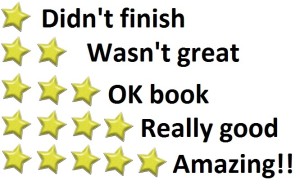 The best advertising is “word of mouth” from satisfied customers. When enthusiastic fans contact you, ask them to consider posting “reader reviews” at your book’s product pages on Amazon, Barnes & Noble, Smashwords, Goodreads, etc.Their affirmation of your book’s worth will reassure browsing customers and persuade many to give it a chance.
The best advertising is “word of mouth” from satisfied customers. When enthusiastic fans contact you, ask them to consider posting “reader reviews” at your book’s product pages on Amazon, Barnes & Noble, Smashwords, Goodreads, etc.Their affirmation of your book’s worth will reassure browsing customers and persuade many to give it a chance.
However, don’t go out and actively solicit reviews from friends and relatives, and never post fake reviews or use any deceptive methods to try to “game the system.” Don’t try to artificially inflate your book’s ratings by conspiring with fellow indie authors to post mutually flattering “customer reviews.” These tactics only devalue the worth of reviews and hurt you and all indie authors in the long run.
There’s a final thing I recommend, again based on personal experience:
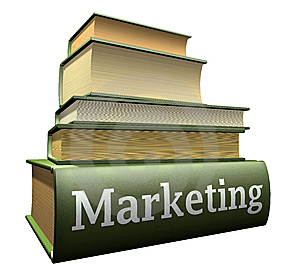 10. Utilize Amazon’s marketing tools.
10. Utilize Amazon’s marketing tools.
For the foreseeable future, Amazon remains your best bet for attaining self-publishing success. And it provides a host of tools for indie authors to maximize their visibility and reach. Here are a few specific ways to utilize those tools to your advantage:
Participate in special promotions, if invited. I speak from experience. Based on my book’s good reviews and steady sales, Amazon invited me to participate in one such week-long promotion late last November. Over the next 35 days, I sold over 50,000 copies of HUNTER.
Exploit your ranking on category bestseller lists in your promotions. If you’ve hit some subcategory bestseller list, use that fact in your marketing blurbs and product descriptions. Don’t be modest. Remember what the early baseball great “Dizzy” Dean said: “Ya ain’t braggin’ if ya can back it up.”
Consider opportunities to run short-term “free” giveaways and promotions for your ebook. I’ve mentioned this earlier. I should add that I haven’t yet done this myself, but it does work for some authors. So do promotional and advertising efforts through certain online sites such as Bookbub.
These tips barely scratch the surface of the many methods you can employ to market your books effectively. But they’re a good beginning.
However, don’t panic if they don’t work to produce stellar sales immediately.
Remember: Ebooks are forever. Once available online, your ebook (or print-on-demand book) isn’t going to go away. It can sit there on a server indefinitely while you continue to experiment with its cover, your promotional blurbs, your marketing campaign…even its content. Yes, unlike a book released by a traditional publisher, you can go back and fix things you don’t like. Eventually, if it’s an appealing book, it will find its audience.
Meanwhile, as you wait for that to happen, let me repeat that the smartest marketing move you can make, bar none, is to start writing your next book.
And if you’re still not convinced that self-publishing is the right route for you, read or reread my earlier post on that topic.
Good luck, and happy writing!




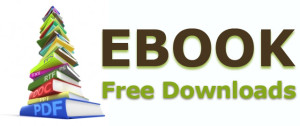
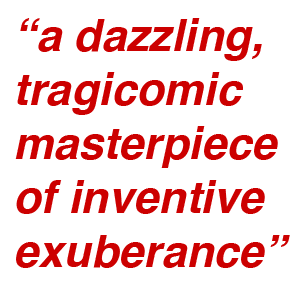
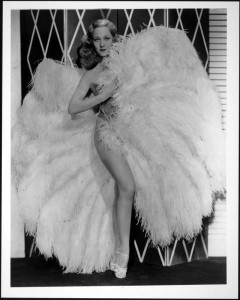

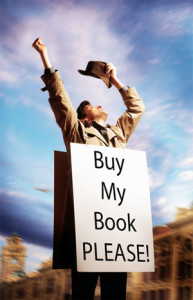
 Photo (c) by Debbie Scott
Photo (c) by Debbie Scott
